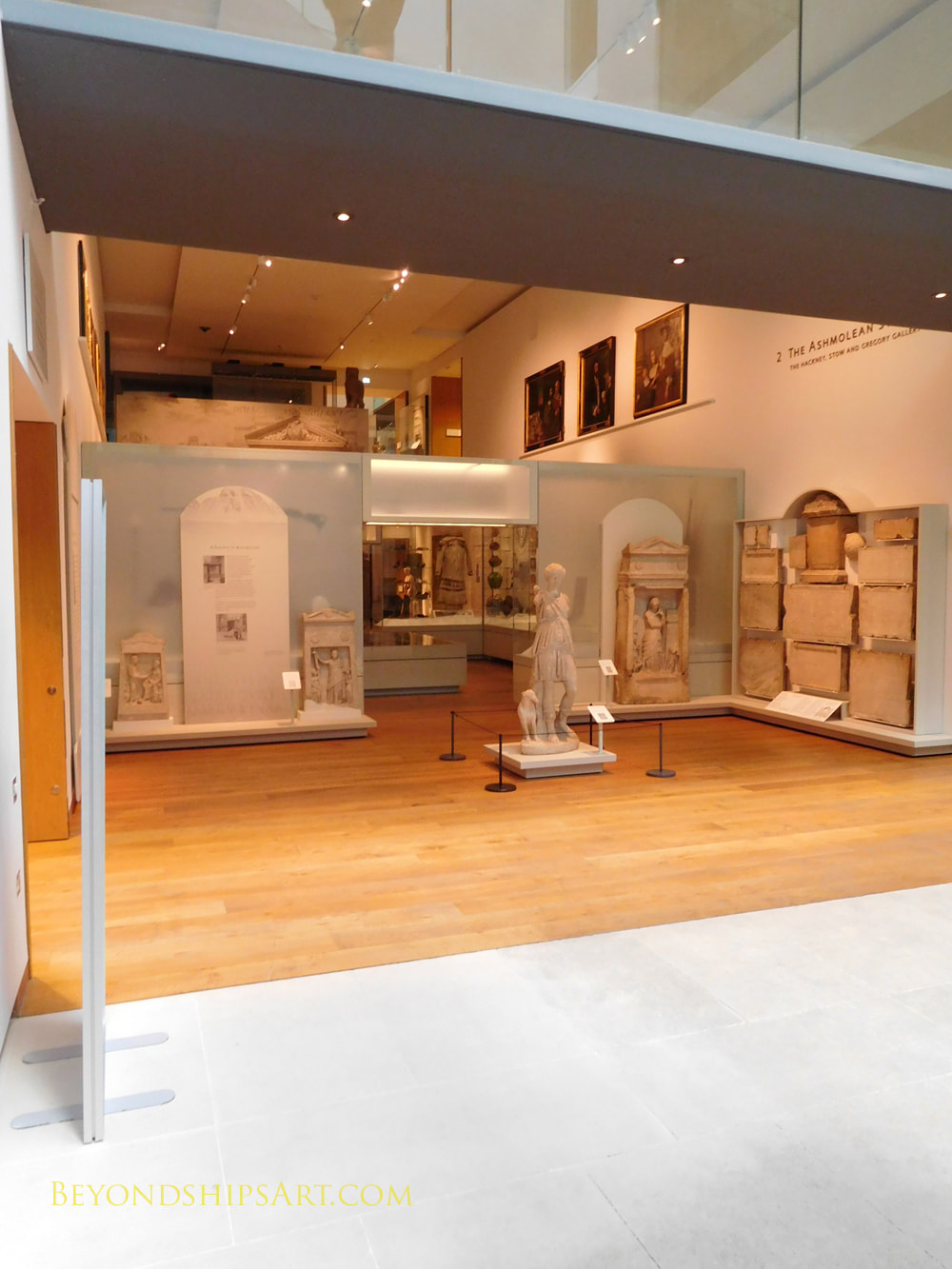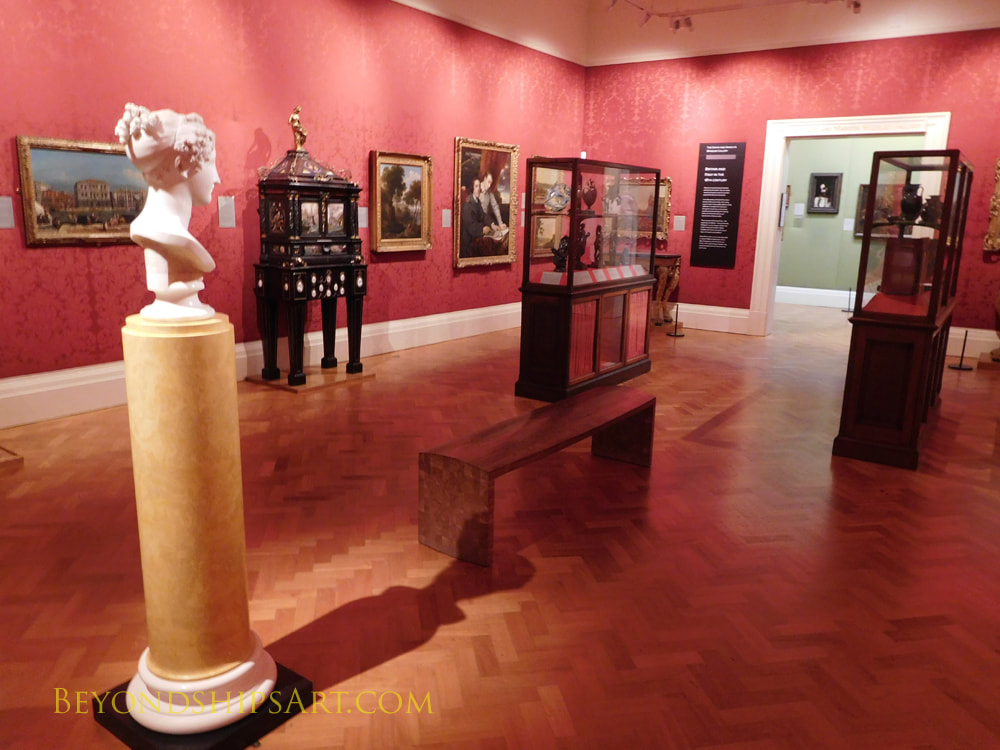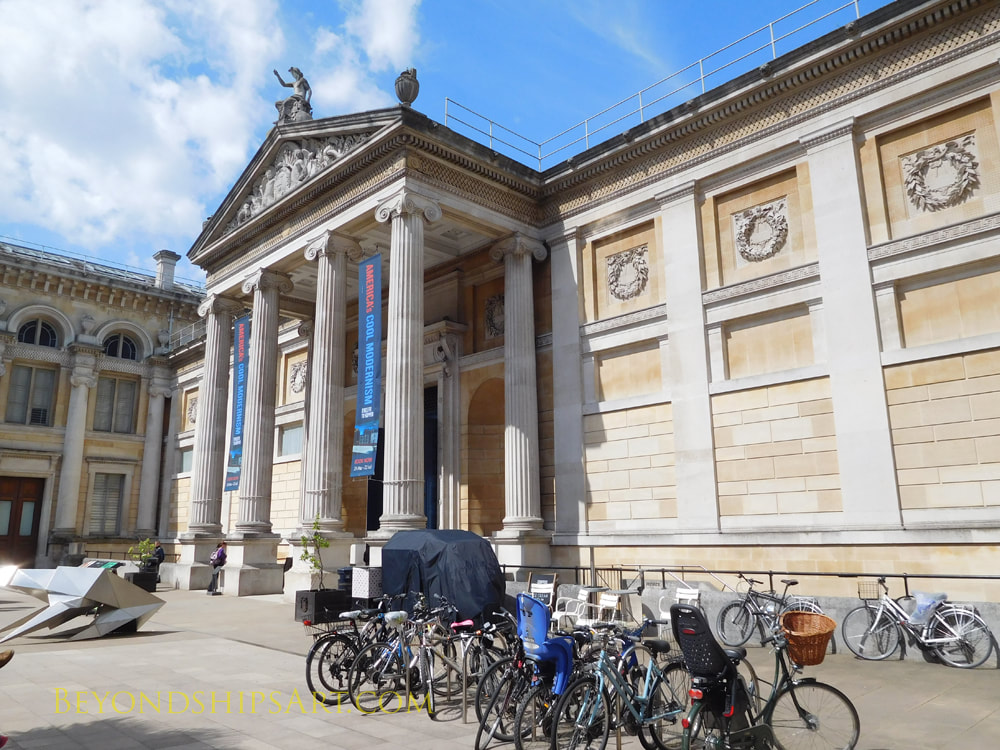|
The Ashmolean Museum of Archaeology and Art is the University of Oxford's museum of art. Although it is located in the relatively small city of Oxford, its collections are world class and include numerous masterpieces. The Ashmolean is guided by the principle that “the knowledge of humanity across cultures and across times is very important to society.”
In the 17th century, the antiquarian Elias Ashmole acquired the collection of curiosities that had been collected by John Trasecant and his son who was also called John. The Tradescants worked as gardeners for the Earl of Salisbury and had amassed their collection of curiosities while traveling the world in search of plants for the Earl's gardens. In 1682, Ashmole gave the collection to the University of Oxford. The new Ashmolean Museum opened in 1683 in the building that is now Oxford's Museum of the History of Science. In an unusual move for the time, the University allowed the public access to the new museum. Included in its collections were ancient coins, books, engravings, geological and zoological specimens including a stuffed Dodo bird. In the 19th century, there was an explosion of discoveries in natural history. This led the university to create a second museum, which incorporated many of the Ashmolean's collections. This led the Ashmolean to change focus and it developed an extensive archaeological collection. The Ashmolean moved to its current building on Beaumont Street in 1894. It was designed by C.R. Cockerell in the classical style. In 1908, the Ashmolean was merged with the University Art Collection. That collection dates back further than the Ashmolean and had grown from a few portraits to a repository of major works. The name of the merged museum became the Ashmolean Museum of Archaeology and Art. The Ashmolean underwent an extensive renovation in 2009. Among other things, the renovation gave the museum five floors of exhibit space in place of three. Various other additions and changes have since been made to the building. Included in the Ashmolean's collections of fine art are drawings by Leonardo, Michelangelo and Raphael. European oil paintings range from the 14th century to the Modern and the collection is especially strong in works from the early and high Renaissance in Italy, the Netherlands in the seventeenth century, the Pre-Raphaelites, and the Impressionists. It includes works by Titian, Constable, Turner, Rubens, Van Dyck, Sargent, Manet, Renoir, Pissaro and Picasso to name a few. And there are extensive collections of Chinese painting and other Asian art, not to forget its internationally famous collections of art from the ancient world including Egyptian sculpture and Minoan pottery. In addition to its permanent collection, the Ashmolean also presents temporary special exhibitions, which sometimes include works on loan from other collections. The museum combines contemporary and traditional style galleries. The layout of the galleries can be somewhat confusing so it is best to have a map (1 pound donation). In addition to the galleries, the Ashmolean has a restaurant, a cafe, a shop and an education centre. There is a cloakroom and lockers. Inasmuch as Oxford is a popular tourist destination, the Ashmolean can be busy. However, it is not overcrowded. For more information on visiting, see the Ashmolean's website. For information about traveling in England
See our Oxford University profile See our England home page |
Above and below: The Ashmolean is a mixture of contemporary and more traditional galleries.
|
Places to see art - - Oxford, England - - Ashmolean Museum of Archaeology and Art


